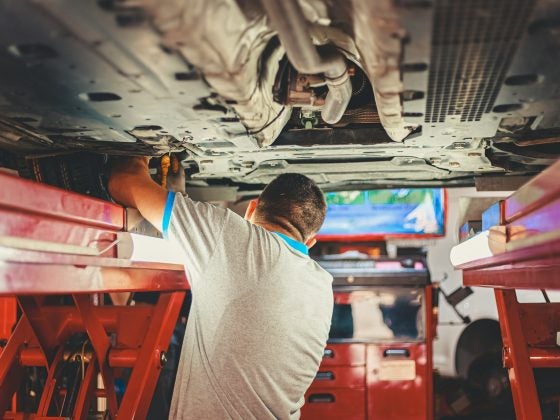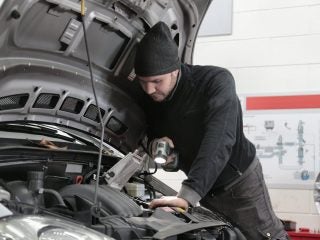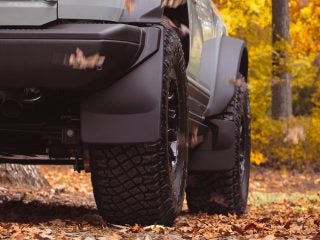Extreme cold can wreak havoc on your car’s technological systems, from sluggish touchscreens and unresponsive sensors to drained batteries and unreliable navigation.
Understanding how frigid temperatures can impact your vehicle and learning how to proactively prevent disruptions to your car’s tech systems can ensure you have a more reliable and comfortable ride in the winter driving season. Whether you’re looking for car insurance to cover unexpected breakdowns or practical tips to protect against winter mishaps, being prepared is key.
Battery and Electrical Systems
Cold winter temperatures can significantly impact the performance of your car’s battery and electrical systems. In frigid conditions, the chemical reactions within the battery can slow down considerably, reducing its ability to deliver the necessary power to start the engine. This can result in slow cranking, difficulty starting, or even a complete failure to start.
Cold weather can also increase the resistance within the battery, making it harder for electrical current to flow efficiently. This can strain the electrical system, potentially impacting the performance of other components that rely on electrical power, such as headlights, windshield wipers, and your car’s computer systems. Cold temperatures can also contribute to corrosion on battery terminals and cables, further hindering the flow of electricity. Corrosion can weaken the connection between the battery and the electrical system, leading to intermittent electrical problems or even complete electrical failures.
Touchscreen Displays and Infotainment
With a poorly functioning electrical system, you could also see impacts on the functionality of touchscreen displays and infotainment systems in your vehicle. This can lead to sluggish response times, delayed processing, and temporary unresponsiveness. The touchscreen itself may also become less sensitive to touch input, requiring more pressure or multiple attempts to register commands, making it difficult to control navigation, audio settings, and climate control.
If your vehicle has an infotainment system, extreme cold may cause its internal components to malfunction, resulting in glitches, unexpected shutdowns, or permanent damage to the system. The display itself may also exhibit issues like pixelation, flickering, or complete loss of image. Being aware of these potential problems is important, especially if you’re considering car insurance quotes that cover advanced tech systems.
Sensors and Cameras
Frigid weather can significantly impact the function of sensors and cameras in your vehicle. With slower-functioning electrical systems, you could experience delayed responses, reduced accuracy, and temporary malfunctions. For example, you may see issues with camera image clarity and focus due to temperature-related fluctuations in the lens or image sensor. Sensors, such as those used for parking assistance, blind spot monitoring, and lane departure warnings, could respond more slowly or not at all, leading to unsafe conditions if you rely on these driving aids.
Meanwhile, ice and snow accumulation on your car’s exterior can obstruct the view of cameras and block the signals emitted and received by sensors, leading to inaccurate readings, false warnings, or complete system failures. It’s important to regularly clear any snow or ice from around cameras and sensors to ensure their proper functioning in winter conditions.
Tire Pressure Monitoring Systems
Cold winter temperatures can significantly impact the function of your automobile’s tire pressure monitoring systems (TPMS). As temperatures drop, the air inside your tires naturally contracts, leading to a decrease in tire pressure. This pressure drop can trigger the TPMS warning light, even if there’s no actual leak in the tire. This is a normal occurrence and usually doesn’t require immediate action. However, it’s important to be aware of this phenomenon and avoid overinflating your tires to compensate for the temporary pressure drop.
In some cases, extreme cold can also affect the sensors themselves within the TPMS system. The cold can slow down the electronic components within the sensors, potentially leading to delayed readings or inaccurate pressure measurements, which may cause intermittent or false warnings from the TPMS system.
Always consult your vehicle’s owner’s manual or a qualified mechanic, however, for specific guidance on tire pressure and TPMS maintenance.
Tips for Protecting Your Car’s Tech in Cold Weather
Fortunately, there are many things you can do to protect your car’s technical, electrical, and sensor systems from the negative impacts of cold weather:
- Ensure your vehicle’s battery is fully charged before the onset of winter weather, and keep battery terminals clean and free of corrosion.
- Consider investing in a battery blanket if you reside in an extremely cold climate.
- Minimize the electrical loads on your car’s systems by avoiding excessive use of electrical accessories like heated seats and defrosters when starting the engine.
- Make sure your vehicle receives regular inspections of its electrical systems by a qualified mechanic to identify and address any potential issues.
- Regularly clear snow and ice from around cameras and sensors, but avoid using harsh chemicals or abrasive materials.
- Give your vehicle’s infotainment system time to warm up before using it heavily.
- Minimize rapid temperature changes within your vehicle, as this can stress the electrical and technical systems.
- Check your tire pressure regularly, and adjust pressure as needed according to your car’s manufacturer recommendations. But understand that tire pressure will naturally drop in cold weather.
- Properly maintain your vehicle with regular oil changes, fluid checks, and other recommended services.
- Use high-quality fluids and lubricants designed for cold-weather operations.
Always consult your vehicle’s owner’s manual or a qualified mechanic for guidance on maintenance and winter driving tips specific to your vehicle’s make and model. Keeping your automobile’s maintenance up to date and regularly reviewing your car insurance policy for needed updates will help you keep your vehicle functioning and protected no matter the driving conditions.
















